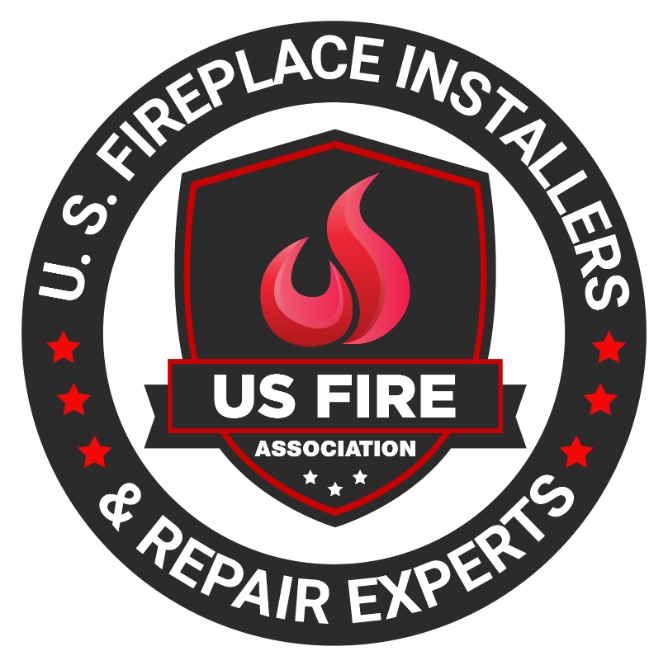Table of Contents
Garage doors have safety beams to prevent accidents and injuries.
We discuss reasons why someone might want to bypass this safety feature, how to do it safely, and the risks involved.
Whether you have a broken safety beam or find it inconvenient, we provide tips on bypassing the safety beam and how to avoid doing so in the future.
Let’s learn more about this important aspect of garage door safety.
What Is a Safety Beam on Garage Doors?
A safety beam on garage doors is a vital safety feature that utilizes infrared sensors to prevent accidents and ensure the safe operation of automatic garage doors.
By emitting an invisible beam of light across the garage door opening, safety beams detect any obstacles or obstructions that may be in the path of the closing door. This triggers the door to automatically reverse its direction, preventing any potential injuries or damage. This technology has been a game-changer in residential settings, offering peace of mind to homeowners knowing that their garage doors are equipped with advanced safety measures.
Safety beams have significantly reduced accidents and incidents associated with garage doors, making them an essential element in modern garage door systems.
Why Would You Want to Bypass the Safety Beam?
There are scenarios where bypassing the safety beam on garage doors might be desired, such as in cases of sensor malfunction, inconvenience, or the need to override the safety mechanism for specific tasks.
In the event of broken sensors, individuals may find it necessary to bypass the safety beam to avoid unnecessary disruptions in accessing their garage. Temporary disablement of the safety feature can occur when individuals need quick and frequent access to their garage without having to wait for the beam to detect obstructions every time.
Some users may choose to override the safety mechanisms to perform maintenance tasks or load bulky items more conveniently. It is crucial to understand that bypassing these safety features can pose significant risks, such as potential accidents or unauthorized access to the garage. Therefore, it is important for individuals to exercise caution and prioritize safety when considering such actions.
Broken Safety Beam
A broken safety beam poses a significant safety concern as it can lead to the malfunction of safety sensors, compromising the overall safety of the garage door system.
This malfunction can result in the safety sensors failing to detect obstacles in the door’s path, increasing the risk of accidents or injuries. Without the proper functioning of safety beams, there is a possibility of the door closing unexpectedly, potentially causing damage to property or harm to individuals in the vicinity.
Troubleshooting steps for a broken safety beam involve checking for physical obstructions, ensuring proper alignment, and examining the wiring connections. Regular maintenance and prompt repairs are crucial to upholding the effectiveness of safety sensors and averting hazardous situations.
Inconvenience
Inconvenience related to safety beams may prompt individuals to consider overriding the safety mechanism, but this action can introduce safety issues and compromise the overall safety of the garage door system.
When facing challenges with safety beams, it’s crucial to resist the temptation to bypass safety protocols. By doing so, users risk jeopardizing the proper functioning of the garage door’s safety features, which are designed to prevent accidents and injuries. Rather than trying to override these mechanisms, it’s essential to address any inconveniences through proper troubleshooting methods or seeking professional assistance. Prioritizing safety concerns and adhering to established safety mechanisms is paramount in ensuring the safe operation of garage doors and preventing potential hazards.”
Is Bypassing the Safety Beam Safe?
Bypassing the safety beam on garage doors can pose serious safety hazards and may lead to non-compliance with safety regulations and standards.
This dangerous practice can result in accidents such as the door closing on a person or object, leading to injuries or property damage. Safety sensors are designed to prevent these scenarios by detecting obstructions and stopping the door from closing. By circumventing these safety features, individuals are putting themselves and others at risk.
There have been instances where individuals have suffered serious injuries or even fatalities due to the malfunctioning of garage door safety mechanisms. It is crucial to prioritize safety compliance to avoid such unfortunate incidents.
How to Bypass the Safety Beam on Garage Doors?
To bypass the safety beam on garage doors, one must first identify the safety beam sensors and then proceed to disconnect, align, or use a bypass module, or seek assistance from a professional for safe and proper bypassing.
- Identifying the safety beam sensors is the initial crucial step in the process. These sensors are usually located on either side of the garage door, near the ground.
- Once located, ensure they are properly aligned and facing each other without any obstructions. Next, carefully disconnect the sensors from the opener unit.
- If alignment doesn’t resolve the issue, consider using a bypass module specifically designed for garage door safety beams.
- Remember, when in doubt, it’s always best to consult a professional to ensure the bypassing is done accurately and safely.
Identify the Safety Beam Sensors
The first step in bypassing the safety beam involves identifying the position of the safety beam sensors and ensuring proper alignment according to safety protocol.
Proper alignment of the safety beam sensors is crucial to prevent malfunctions and ensure the garage door operates safely. To do this, start by checking that the sensors are facing each other directly across the doorway and are mounted at the same height. Use a level to confirm they are aligned both horizontally and vertically. Make sure there are no obstructions blocking the sensor’s line of sight. Regularly clean the sensors to avoid dust or debris interference. A well-aligned sensor system is essential for maintaining the safety of your garage door.
Disconnect the Safety Beam Sensors
After identifying the safety beam sensors, the next step is to disconnect them, following necessary safety measures and ensuring compliance with safety requirements.
- Before disconnecting the sensors, it is crucial to have a clear understanding of their positioning and function to avoid any mishaps.
- Once you have located them, make sure to power off the garage door opener.
- Use insulated tools to prevent any electrical accidents.
- Gently detach the sensor wires from the opener unit, following the manufacturer’s instructions.
- After disconnecting, label the wires for easy reconnection in the future.
- Store the sensors in a secure place away from moisture and extreme temperatures to maintain their proper functioning.
Use a Jumper Wire
Using a jumper wire can sometimes serve as a temporary solution to bypass the safety beam, but it is crucial to conduct a safety check and ensure safety locks are engaged to prevent accidents.
Safety checks play a vital role in verifying that the garage door functions are operating correctly and that all safety features are in place.
Safety locks act as an additional layer of defense against unauthorized entry and prevent the door from moving unexpectedly. It is recommended to periodically inspect the safety locks and mechanisms to guarantee they are in proper working condition.
By incorporating these practices into your routine maintenance, you can ensure the safety and security of your garage door system.
Use a Bypass Module
Installing a bypass module can offer a more permanent solution for bypassing the safety beam, but users must adhere to safety guidelines and pay attention to safety alerts to maintain a secure operating environment.
Bypass modules are designed to function as a crucial component in ensuring the safe operation of garage doors. When installing a bypass module, it is imperative to carefully follow the manufacturer’s instructions to guarantee proper functioning. These modules enable users to bypass safety beams without compromising safety, provided they respond promptly to any safety alerts that may arise. By incorporating bypass modules into their garage door systems, users can enjoy peace of mind knowing that they have a reliable, long-term solution in place for safety beam bypasses, all while ensuring compliance with necessary safety guidelines.
Consult a Professional
When in doubt or faced with complex bypass scenarios, it is advisable to consult a professional who can provide expert guidance on bypassing safety beams while ensuring adherence to safety guidelines and precautions to avoid any safety breaches.
Professional assistance is crucial in situations where safety beams are involved as these safety features are designed to prevent accidents and ensure the well-being of individuals.
By seeking help from a specialist, one can navigate the complexities of bypassing procedures effectively and safely. Adhering to safety protocols and taking necessary precautions during the bypass process not only minimizes the risk of mishaps but also promotes a culture of responsible and safe equipment usage.
The expertise of a professional can make a significant difference in maintaining the functionality and safety of garage door systems.
What Are the Risks of Bypassing the Safety Beam?
Bypassing the safety beam on garage doors can result in significant safety hazards, potential safety violations, and compromise the overall safety of the garage door system.
Disabling safety sensors not only exposes individuals to the risk of entrapment or injury from a closing garage door but also poses a danger to children and pets, who might go unnoticed by the door operator.
In addition, bypassing these essential safety features can lead to property damage or even fatalities in severe cases. By ignoring safety regulations and circumventing these sensors, individuals not only increase the likelihood of accidents but also open themselves up to potential legal ramifications for violating safety standards.
How to Avoid Bypassing the Safety Beam?
To prevent the need for bypassing the safety beam, regular maintenance, proper installation, adherence to safety guidelines, and conducting safety checkups can help ensure the effective operation of safety technology and locks.
Regular maintenance plays a crucial role in keeping safety beams functional. It is essential to inspect the beams for any damage or blockages that may hinder their operation. Ensuring correct installation by a professional can reduce the likelihood of safety beam malfunctions.
Adhering to safety guidelines specified by the manufacturer is imperative for the proper functioning of garage door safety measures. Routine safety checkups and inspections can help identify any issues early on, allowing for timely repairs and maintenance to keep the safety technology in optimal condition.
Regular Maintenance and Repair
Regular maintenance and timely repairs are essential for ensuring the proper functioning of safety beams and the overall compliance with safety codes and standards.
By conducting regular maintenance checks on the safety beams of your garage door, you can prevent potential malfunctions that may pose safety risks. Addressing any issues promptly through timely repairs not only safeguards your property and loved ones but also ensures compliance with industry safety standards.
Emergency override features play a crucial role in maintaining a safe operating environment by allowing for swift intervention during unforeseen circumstances. Adhering to safety codes and regulations not only guarantees a secure environment but also enhances the longevity and efficiency of your garage door system.
Proper Installation
Proper installation of safety features, along with adherence to safety alerts and warnings, is crucial in establishing a secure environment and minimizing the likelihood of needing to bypass the safety beam.
Correctly installing safety features like photo-eye sensors, auto-reverse mechanisms, and proper wiring turns them into the first line of defense against potential accidents, preventing the door from closing on objects or individuals.
Following the safety alerts and warnings manufacturers provide ensures users know how to operate the garage door system safely and understand the risks of bypassing safety protocols.
Follow Safety Guidelines
Adhering to safety guidelines, notices, and fail-safe mechanisms enhances safety awareness and reduces the likelihood of safety failures that may lead to the consideration of bypassing the safety beam.
By following these safety protocols, individuals are not only protecting themselves but also those around them. It is important to understand that these guidelines are in place for a reason – to keep everyone safe and prevent potential accidents or injuries. Ignoring these safety measures can have serious consequences, making it crucial to prioritize safety at all times. Regularly reviewing and reinforcing these safety practices can create a culture of safety consciousness that permeates throughout the entire work environment, ensuring a safer and more secure operating space for all.
Frequently Asked Questions
1. What is a safety beam on garage doors?
A safety beam is an infrared sensor that stops the garage door if something blocks its path.
2. Why would you want to bypass the safety beam?
People may bypass it due to sensor malfunction or for convenience during certain tasks.
3. Is bypassing the safety beam safe?
Bypassing the beam can lead to accidents and violates safety standards.
4. How do you bypass the safety beam on garage doors?
Bypassing involves identifying sensors, possibly disconnecting them, or consulting a professional.
5. What are the risks of bypassing the safety beam?
Risks include injuries, potential damage, and legal issues from safety violations.
6. How to avoid bypassing the safety beam?
Regular maintenance, correct installation, and adherence to safety guidelines can prevent the need to bypass.
Latest Articles

What Is An NG (Natural Gas) Indicator And Why You Need It For Your Fireplace
Table of Contents1 Understanding Natural Gas Fireplaces2 What is an NG Indicator?3 Importance of NG Indicators for Safety4 Types of NG Indicators5 Installation and Maintenance of NG Indicators6 Signs of a Faulty NG Indicator7 Frequently Asked Questions Natural gas fireplaces are a favored option among numerous homeowners due to their convenience and effectiveness. But, what is an NG (Natural Gas) indicator and why you need it for your fireplace? It is imperative to comprehend how they function and the significance of having an NG (Natural Gas) indicator for safety purposes. This article delves into the definition and significance of NG indicators. We will discuss the potential hazards associated with the absence of one and the various types of indicators accessible. Also, we will discuss installation and maintenance recommendations, and methods to recognize and rectify issues with malfunctioning indicators. Stay well-informed and ensure the safety of your home by referring to this exhaustive guide. Understanding Natural Gas Fireplaces Natural gas fireplaces serve as an efficient and convenient heating option for numerous households. They utilize natural gas as a fuel source to deliver consistent warmth and ambiance. How They Work and Why They Need NG Indicators The operation of natural gas fireplaces involves igniting natural gas to generate heat. This process requires diligent monitoring to ensure both safety and efficiency, a task facilitated by the use of NG indicators. NG indicators play a critical role in detecting potential gas leaks. They enable residents to promptly address and mitigate any associated hazards. Through continuous monitoring of gas levels and providing timely warnings and alerts, NG indicators uphold a secure indoor environment. It is imperative to ensure that these indicators function properly to facilitate the effective operation of natural gas fireplaces. This helps mitigate the inherent risks linked to gas leaks. What is an NG Indicator? An NG indicator is a specialized device equipped with advanced sensors and technology. It is specifically designed to detect natural gas leaks and monitor gas pressure in appliances, such as fireplaces. Definition and Purpose The NG indicator functions as a detector that monitors gas appliances for potential leaks. It provides essential functionality to ensure safety in households utilizing natural gas. These detectors play a crucial role in protecting residences by notifying occupants of dangerous gas leaks long before they escalate into perilous situations. Through continuous monitoring of gas levels in the vicinity, NG indicators offer an additional layer of protection. This is particularly important in properties that rely on gas-operated fireplaces or stoves. These devices not only help avert potential disasters but also enhance the overall peace of mind of homeowners. They assure them that their living spaces are equipped with reliable safety features. Importance of NG Indicators for Safety Natural gas indicators are essential for maintaining safety in households equipped with natural gas appliances. These devices serve as a proactive measure to promptly detect gas leaks. This offers homeowners a sense of security and assurance. Potential Dangers of Not Having an NG Indicator The absence of an NG indicator in residences equipped with natural gas appliances can pose significant hazards. This includes the risk of undetected gas leaks , carbon monoxide poisoning , and pilot outages that may lead to dangerous situations. These potential risks can profoundly impact indoor air quality. They directly influence the health and safety of individuals residing in the household. Undetected gas leaks can go unnoticed, gradually permeating the air and creating a potentially explosive environment. Insufficient ventilation from undetected exposure to carbon monoxide can lead to serious health complications. These range from mild symptoms such as dizziness to fatal poisoning. Without proper monitoring from an NG indicator, families are left susceptible to these concealed threats. This underscores the critical importance of implementing proactive measures to mitigate such risks. Types of NG Indicators Indicators for Natural Gas (NG) are available in diverse types. Each presents distinct detection capabilities tailored to specific requirements, encompassing both manual and automated alternatives. Manual vs. Automatic Indicators Manual NG indicators require user intervention for monitoring gas levels and identifying leaks. On the other hand, automatic indicators employ sophisticated technology to deliver continuous, real-time monitoring. This heightened efficiency and oversight enhance safety protocols. Conventional manual indicators rely on individuals to physically inspect and evaluate gas levels periodically. This renders them more susceptible to human errors. Conversely, automatic indicators feature sensors capable of promptly detecting even the most minute fluctuations in gas levels. This establishes a more dependable and precise monitoring mechanism. Automatic indicators can activate alerts and shut-off systems upon detecting a leak. This ensures immediate action to avert potential hazards. This advanced technology enhances safety protocols and instills a sense of command and assurance among users. Installation and Maintenance of NG Indicators The reliable and accurate performance of NG indicators necessitates proper installation and consistent maintenance. This often entails professional installation and adherence to recommended service guidelines. Proper Installation and Regular Maintenance Tips The proper installation of NG indicators involves adhering to the specifications in the user manual. Maintenance protocols entail strict adherence to a predetermined maintenance schedule to ensure sustained operational efficiency. During the installation phase, it is imperative to verify that the NG indicators are securely affixed in the designated location as stipulated by the manufacturer. Crucial steps include confirming power source compatibility and ensuring proper grounding of the device to optimize performance. Calibration of the indicator must be executed meticulously to ensure precise readings. Regarding maintenance, essential practices include regular inspection for signs of wear, thorough cleaning of the indicator components, and routine functionality tests. By allocating time to a consistent maintenance regimen, the NG indicator can operate with optimal efficiency over an extended duration. Signs of a Faulty NG Indicator Recognizing indicators of a malfunctioning NG indicator is essential for upholding safety and performance standards. Inaccuracies and detection issues can undermine the efficacy of these devices. Identifying and Addressing Issues The process of identifying and addressing issues related to NG (natural gas) indicators requires a systematic troubleshooting approach. This ensures their optimal performance

What You Need To Know About Gas Log Set Safety And Installation Considerations
Table of Contents1 Understanding Gas Log Sets2 Safety Considerations for Gas Log Sets3 Installation Guidelines for Gas Log Sets4 Maintaining and Troubleshooting Gas Log Sets5 Frequently Asked Questions Gas log sets are a favored option among homeowners seeking to enjoy the comfort and atmosphere of a conventional fireplace without the inconvenience of wood. This article tells you what you need to know about gas log set safety and installation considerations. Before incorporating one into your residence, it is imperative to understand the safety considerations associated with their use. This discussion delves into the potential hazards linked with gas log sets. It presents crucial precautions to uphold the safety of your home. Also, it outlines proper installation procedures and offers insight into common errors to avoid. Finally, it provides advice on maintenance and troubleshooting. Gain comprehensive knowledge on gas log set safety and installation considerations. Understanding Gas Log Sets Comprehending gas log sets is essential for individuals seeking to elevate their fireplace experience, and for gas lag set safety and installation. These heating appliances can operate on either natural gas or propane. In addition, they are available in a range of styles, including vented, ventless, and vent-free options. They provide an array of benefits and customization opportunities through various fireplace accessories. What are Gas Log Sets? Gas log sets are meticulously crafted artificial logs. They are designed to imitate the appearance and functionality of authentic wood logs within fireplaces. These gas log sets typically consist of ceramic or refractory concrete logs that have been skillfully molded and painted. This allows them to replicate the natural grain and texture of real wood. The logs are arranged in various configurations within the fireplace. They establish a realistic and welcoming ambiance. In addition to the logs, gas log sets often include fireplace accessories such as glowing embers. Accessories also include decorative stones, and even pine cones to enhance the overall aesthetic appeal. Homeowners can select from an array of placement options. These include traditional wood stack, cascading driftwood, or a contemporary geometric arrangement. Homeowners can align their preferred style and design preferences. Safety Considerations for Gas Log Sets Safety considerations for gas log sets are of utmost importance to guarantee a secure and pleasant fireplace experience. It is essential to address potential hazards such as carbon monoxide exposure, gas leaks, and fire safety to maintain a safe environment for homeowners. Potential Hazards and Precautions Gas log sets come with potential hazards that must be taken seriously, including the risks of gas leaks, carbon monoxide poisoning, and fire incidents. It is imperative to establish and adhere to rigorous safety measures to ensure the well-being of individuals and properties involved in the use of gas log sets. Gas leaks represent a significant hazard when utilizing gas log sets. They can result in the accumulation of combustible gas within the premises, heightening the possibility of explosions or fires. Carbon monoxide, an insidious gas generated during incomplete combustion, poses a grave threat due to its colorless and odorless nature, making it undetectable without proper monitoring. To address these risks effectively, it is vital to install carbon monoxide detectors and gas leak sensors in the vicinity of the gas logs. Routine maintenance checks on the gas log system, including cleaning and inspection procedures, are critical to ensure safe operations and the prompt identification of potential issues. In case of a gas leak or suspected presence of carbon monoxide, immediate evacuation of the affected area is paramount, followed by prompt contact with emergency services. Recognizing the distinct odor of rotten eggs associated with natural gas can serve as an early warning sign, prompting swift actions to avert any potential accidents. Installation Guidelines for Gas Log Sets The installation of a gas log set necessitates meticulous planning and strict adherence to specific guidelines. This includes verifying a secure gas connection, ensuring proper gas lines are in place, and complying with local building codes. Often, the complexity of these requirements may require the expertise of a certified technician. Proper Installation Techniques The appropriate installation procedures for gas log sets involve the secure connection of gas lines, meticulous adherence to installation manuals, and strict compliance with local building codes. It is imperative to prioritize the guarantee of secure gas connections to avert leaks and potential safety hazards. During the installation of gas log sets, utilizing suitable sealants and fittings is essential to establish a tightly sealed connection. The correct installation of gas lines is critical for both the safety and operational efficacy of the gas log set. Reference to the installation manual is highly advisable for detailed, step-by-step guidance to prevent inaccuracies and ensure the successful establishment of the gas log set. Consistently adhering to building codes and regulations upholds safety standards. Seeking guidance and confirmation from a certified technician before and after installation can offer invaluable support and assurance throughout the process. Common Installation Mistakes to Avoid It is imperative to avoid common installation errors to ensure the secure and effective operation of gas log sets. This includes verifying proper gas connections and compliance with building codes. Improper gas connections can result in leaks and potential hazards, underscoring the importance of verifying the tightness and correct alignment of all fittings. Failure to adhere to building codes can lead to structural complications, penalties for non-compliance, or even safety concerns. To prevent these oversights, it is advised to consult the manufacturer’s installation guidelines and strictly adhere to local regulations. Engaging a certified technician for the installation of gas log sets guarantees that the procedure is carried out accurately and securely. This provides assurance that the system is functioning as intended. Maintaining and Troubleshooting Gas Log Sets Regular maintenance and troubleshooting of gas log sets are imperative to uphold their optimal performance and safety. This includes thorough examination of the pilot light, pilot assembly, and other gas appliances to preserve heating efficiency and promptly resolve any arising issues. Tips for Maintenance and Repair Ensuring the proper maintenance of your gas log set necessitates conducting

Key Considerations For Using Compressed Liquid Propane In Fireplace Installation
Table of Contents1 What is Compressed Liquid Propane?2 Benefits of Using Compressed Liquid Propane in Fireplaces3 Safety Precautions for Installing Compressed Liquid Propane Fireplaces4 Installation Process for Compressed Liquid Propane Fireplaces5 Maintenance and Care for Compressed Liquid Propane Fireplaces6 Alternative Fuel Options for Fireplaces7 Frequently Asked Questions If you are contemplating the use of compressed liquid propane in your fireplace installation, this discussion will delve into the advantages of adopting this alternative fuel option. These benefits include enhanced efficiency, cost savings, and important safety precautions to consider. Furthermore, a detailed step-by-step guide on the installation process will be provided, along with recommendations for maintenance and care. A comparison of various fuel options for fireplaces will also be conducted to assist you in making an informed decision. We encourage you to stay engaged to gain insights into optimizing your fireplace’s capabilities with compressed liquid propane. What is Compressed Liquid Propane? Compressed Liquid Propane is a versatile energy source contained in a high-pressure propane tank. It finds extensive utility in both residential and commercial settings, prominently including fireplaces. Recognized for its convenience and efficiency, Compressed Liquid Propane emerges as a favored option for heating residential spaces and facilitating culinary pursuits across various environments. Additionally, it serves as a viable fuel substitute in vehicular contexts, portable cooktops, and outdoor grilling scenarios due to its propensity for clean combustion. The attribute of portability, coupled with ease of storage, positions Compressed Liquid Propane as an optimal energy source for individuals residing off the conventional grid. It is also great for engaging in outdoor activities such as camping and recreational vehicle (RV) travel. Moreover, the high energy density inherent to Compressed Liquid Propane renders it a dependable choice for sustaining generators during instances of power disruptions. Benefits of Using Compressed Liquid Propane in Fireplaces Utilizing Compressed Liquid Propane for fireplace installation presents several benefits. These include enhanced fuel efficiency, convenience, cost-effectiveness, and a favorable environmental footprint. These attributes render it a recommended option for heating solutions, applicable to both on-grid and off-grid settings. Efficiency and Cost Savings The utilization of Compressed Liquid Propane in fireplaces offers significant advantages, notably in terms of high fuel efficiency and cost-effectiveness. These attributes are underscored by the exceptional BTU rating and overall heating efficiency of Compressed Liquid Propane. The elevated fuel efficiency exhibited by Compressed Liquid Propane fireplaces necessitates less fuel to generate the same level of heat compared to traditional wood-burning fireplaces or electric heating systems. Consequently, homeowners can realize cost savings on their heating expenditures over an extended period. Moreover, the clean-burning characteristics of propane minimize maintenance costs linked to soot and ash cleanup. This further enhances the cost-effectiveness of employing propane fireplaces. Safety Precautions for Installing Compressed Liquid Propane Fireplaces Ensuring safety is of utmost importance during the installation of Compressed Liquid Propane fireplaces. This requires strict adherence to safety regulations, meticulous attention to proper ventilation requirements, careful control of ignition sources, and the incorporation of carbon monoxide and gas leak detection systems. Important Safety Measures Essential safety protocols for the installation of Compressed Liquid Propane fireplaces encompass adherence to fire safety regulations. Engaging in professional assessments and employing sophisticated gas leak and carbon monoxide detection mechanisms is crucial. Professional evaluations play a critical role in identifying any prospective hazards or irregularities within the fireplace infrastructure. These assessments are vital in ensuring the operational integrity of all components and compliance with safety protocols. Routine inspections serve to forestall potential fire incidents, gas discharges, or carbon monoxide emissions that could pose significant threats to both the property and individuals in the vicinity. The utilization of advanced gas leak and carbon monoxide detection systems serves as an additional safeguard by promptly notifying occupants of any elevated levels of these hazardous gases. Installation Process for Compressed Liquid Propane Fireplaces The installation procedure for Compressed Liquid Propane fireplaces encompasses several critical steps. These include: Adhering to installation guidelines Correctly positioning the propane tank Ensuring precise gas line installation Optimizing heat output Monitoring pressure regulation Establishing the pilot light Step-by-Step Guide The installation process of Compressed Liquid Propane fireplaces involves a systematic approach. This begins with the construction of the firebox, followed by the installation of the gas control valve, setup of the ignition system, design of the flue, and verification of a suitable combustion air supply. The construction of the firebox assumes critical importance as it serves as the foundation of the fireplace structure. It securely holds the combustible materials in place. Subsequently, the gas control valve plays a key role in managing the propane flow, guaranteeing safe and efficient operation. The installation of the ignition system facilitates convenient and reliable fire initiation. Designing the flue is a necessary step to direct exhaust gases outside, thus preventing their accumulation indoors. Moreover, ensuring a proper combustion air supply is essential to sustain optimal burning conditions and enhance fuel consumption efficiency. Each component contributes significantly to the functionality and safety of the fireplace installation process. This underscores the importance of meticulous attention to detail and adherence to established protocols. Maintenance and Care for Compressed Liquid Propane Fireplaces Consistent maintenance and attention to Compressed Liquid Propane fireplaces are imperative to guarantee their optimal functionality. This includes adherence to prescribed maintenance protocols, regular chimney upkeep, prevention of soot accumulation, and scheduling of routine propane deliveries and professional inspections. Tips for Keeping Your Fireplace in Good Condition For the maintenance of your Compressed Liquid Propane fireplace, it is essential to conduct regular checks on ignition sources. Monitor flame appearance, clean the gas burner and pilot assembly, and verify the correct operation of the safety shut-off valve. The inspection of ignition sources requires a detailed examination of the electronic igniter. This helps identify any signs of damage or corrosion and ensures proper sparking upon activation. Monitoring flame appearance involves observing a consistent blue flame with minimal flickering, which signifies efficient combustion. Cleaning the gas burner and pilot assembly can be performed using a soft brush or compressed air to eliminate any dirt or debris that may


















































































